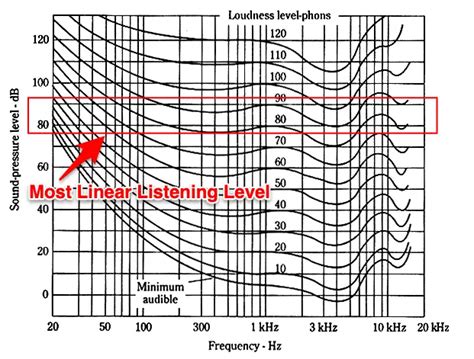How Loud Should Bass Be In A Mix
Ronan Farrow
Apr 06, 2025 · 3 min read

Table of Contents
How Loud Should Bass Be in a Mix? Finding the Sweet Spot
Getting the bass right in a mix is crucial. Too quiet, and it disappears; too loud, and it muddies everything else. Finding that sweet spot is a skill that takes practice, but understanding the key principles will get you much closer to a professional-sounding mix. This guide explores how to determine the optimal bass level in your mixes, covering technical aspects and creative considerations.
Understanding the Role of Bass in a Mix
Bass frequencies are the foundation of most music. They provide the rhythmic pulse and the low-end weight that gives a track its groove and impact. However, these frequencies are also easily masked by other instruments, particularly the kick drum. Therefore, achieving the right balance is paramount. A poorly mixed bass can ruin an otherwise great track, while a well-mixed bass can transform a good track into a great one.
The Importance of Sub-Bass
Beyond the fundamental bass frequencies (typically 80-250Hz), sub-bass frequencies (below 80Hz) contribute significantly to the overall perception of power and depth. While you may not always consciously hear the sub-bass, its presence dramatically affects the feel of the track. Ignoring the sub-bass often results in a thin-sounding mix.
Techniques for Achieving the Perfect Bass Level
There's no magic number for bass level; the ideal level is context-dependent and varies based on genre, instrumentation, and personal preference. However, several techniques can help you achieve optimal balance.
1. Start with the Kick Drum
The kick drum and bassline often occupy a similar frequency range. It's generally best to establish the kick drum's level first, then adjust the bass to complement it. Aim for a powerful kick drum that doesn't overshadow the bass, and a bassline that fills the low-end without muddying the kick.
2. Use EQ to Carve Out Space
EQing is your best friend. Use a high-pass filter on the bass to remove unnecessary low frequencies that might be clashing with the kick. Similarly, high-pass filter other instruments to prevent them from masking the bass. Experiment with subtle cuts and boosts in the bass's midrange to ensure clarity.
3. Pay Attention to Phase
Phase cancellation between the kick drum and bass can significantly reduce low-end energy. Use a phase correlation meter to identify and address phase issues. This often involves subtle adjustments to the bassline's timing or polarity.
4. Utilize Compression
Compression can help control the dynamics of the bassline, ensuring it sits nicely within the mix. However, avoid over-compressing, as this can make the bass sound unnatural or lifeless.
5. Check on Different Playback Systems
Your mix should sound good across various systems. Check your mix on headphones, monitors, and even smaller, portable speakers to ensure the bass translates well. This reveals potential problems in the low-end frequencies that may be audible on different systems.
The Listener's Perspective: Feel Over Loudness
While technical aspects are important, ultimately, the perceived loudness of the bass is subjective. A great bassline isn't necessarily the loudest one. It's about achieving a balance where the bass is felt as much as it's heard. It should provide a solid foundation for the track without overpowering other elements.
Mastering the Art of Bass Mixing: A Continuous Journey
Mastering bass mixing is an ongoing process of learning and experimentation. Don't be afraid to experiment with different techniques and settings. Pay close attention to how the bass interacts with the rest of your mix, and trust your ears. With practice and patience, you'll be able to achieve that perfect balance – the sweet spot where your bassline shines without overshadowing the rest of your music.
Featured Posts
Also read the following articles
| Article Title | Date |
|---|---|
| How Many 8 Inch Blocks In A Queen Size Quilt | Apr 06, 2025 |
| How Long To Air Fry Frozen Tamales | Apr 06, 2025 |
| How Long Is Your License Suspended For Dui In Georgia | Apr 06, 2025 |
| How Many Amps Does Led Lights Use | Apr 06, 2025 |
| How Long To Wear Compression Sleeves After Arm Lipo | Apr 06, 2025 |
Latest Posts
-
How Many Steps Are There For Intervention
Apr 07, 2025
-
How Many Steaks Come From One Cow
Apr 07, 2025
-
How Many Starburst In A 50 Oz Bag
Apr 07, 2025
-
How Many Stages Of Licenses Does Tadra Have
Apr 07, 2025
-
How Many Square Feet Will A Bale Of Straw Cover
Apr 07, 2025
Thank you for visiting our website which covers about How Loud Should Bass Be In A Mix . We hope the information provided has been useful to you. Feel free to contact us if you have any questions or need further assistance. See you next time and don't miss to bookmark.
